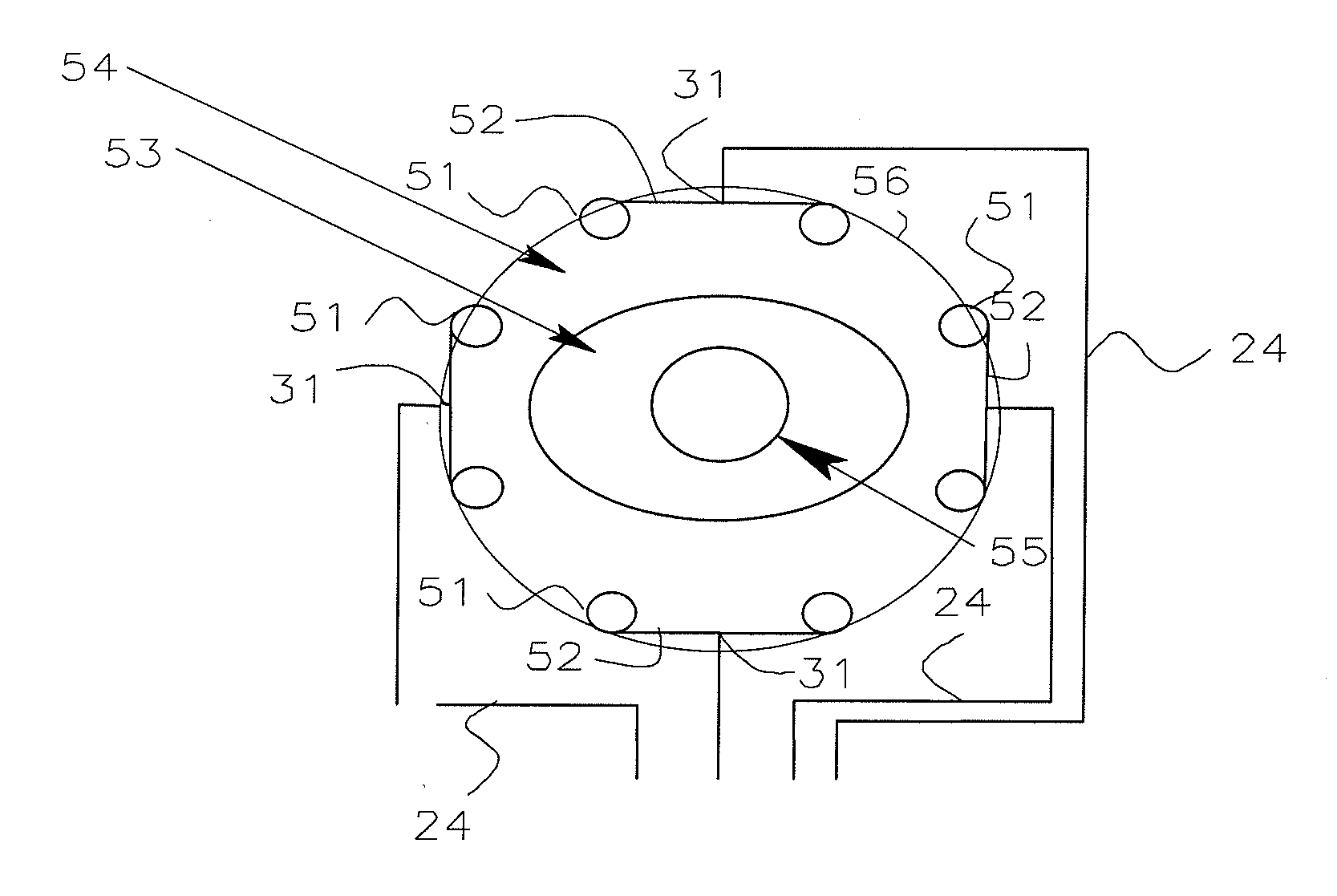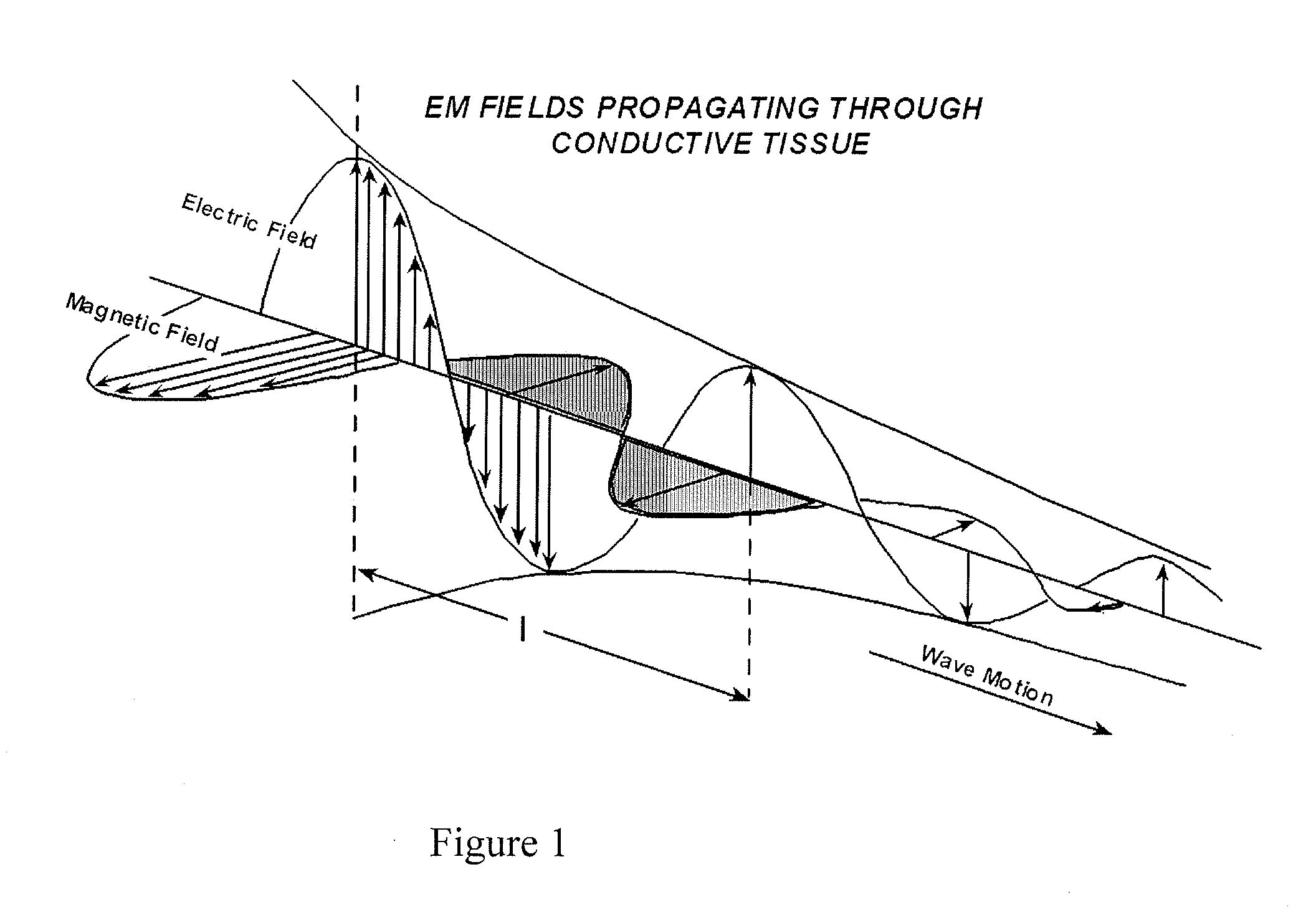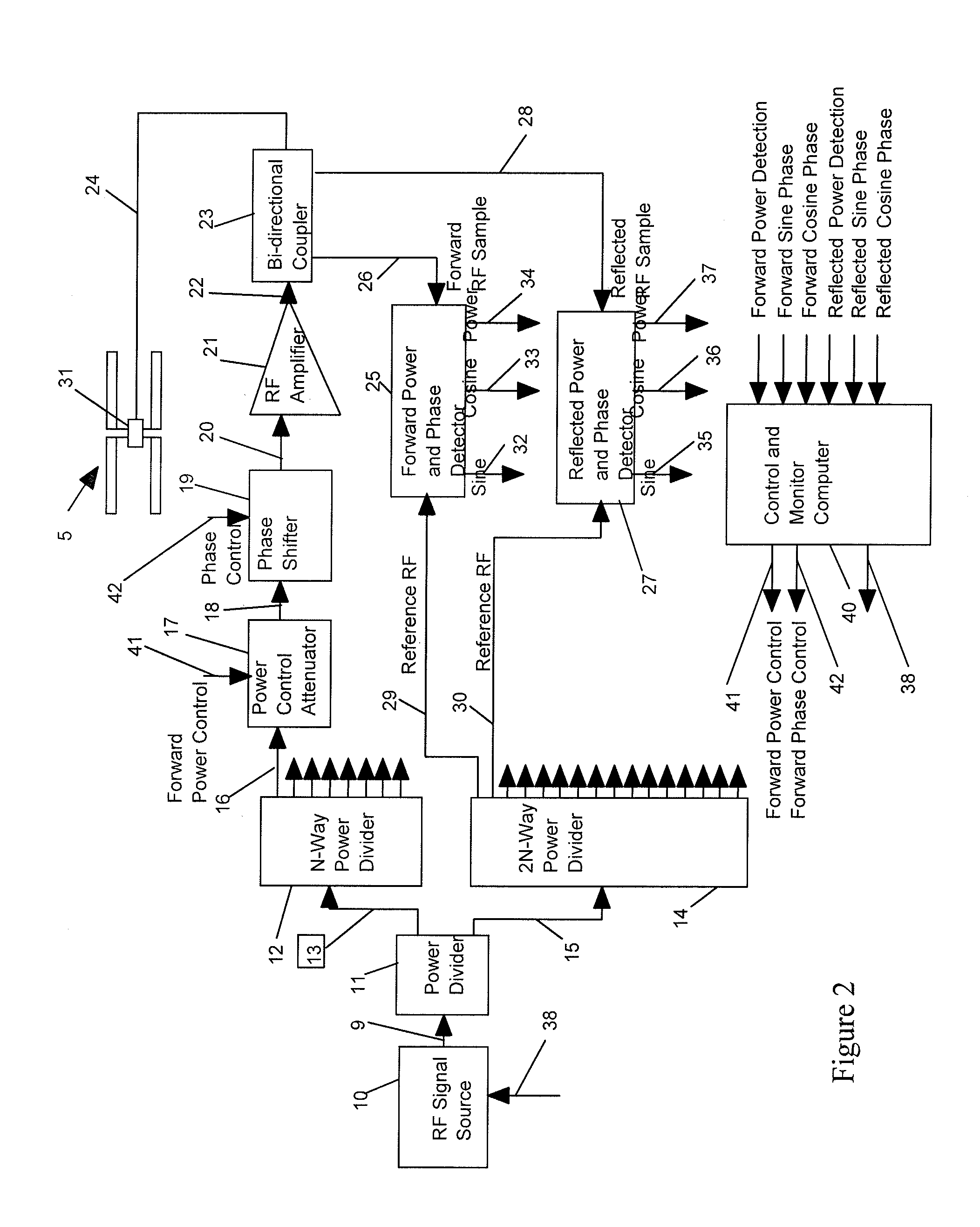Tissue heating prediction using feedpoint em field determination
a technology of em field and feedpoint, applied in the field of tissue heating, can solve the problems of reducing the efficiency of tissue heating, and increasing the complexity of the system, so as to achieve more selective heating power, reduce the effect of hotspots, and predict more accurately
- Summary
- Abstract
- Description
- Claims
- Application Information
AI Technical Summary
Benefits of technology
Problems solved by technology
Method used
Image
Examples
Embodiment Construction
[0029]The present invention provides a phased array hyperthermia system providing a plurality of power output channels each having an output power amplifier for amplifying the channel power output signal. The output of an output power amplifier is connected by a coaxial cable to an applicator which transmits the power to the tissue to be treated. Such an applicator can take the form of a dipole antenna couplet having two parallel side-by-side dipole antennas which are separated by and have their feedpoints connected by a coupling tee transmission line. The coaxial cable is connected to the tee transmission line (couplet feedpoint) which directs the output of the power amplifier to the feedpoint of each of the dipole antennas. The output power amplifier measures the forward power provided by the amplifier, the phase of the forward power, the reflected power received back by the power amplifier, and the phase of the reflected power. By knowing the length of the coaxial cable, the four...
PUM
 Login to view more
Login to view more Abstract
Description
Claims
Application Information
 Login to view more
Login to view more - R&D Engineer
- R&D Manager
- IP Professional
- Industry Leading Data Capabilities
- Powerful AI technology
- Patent DNA Extraction
Browse by: Latest US Patents, China's latest patents, Technical Efficacy Thesaurus, Application Domain, Technology Topic.
© 2024 PatSnap. All rights reserved.Legal|Privacy policy|Modern Slavery Act Transparency Statement|Sitemap



